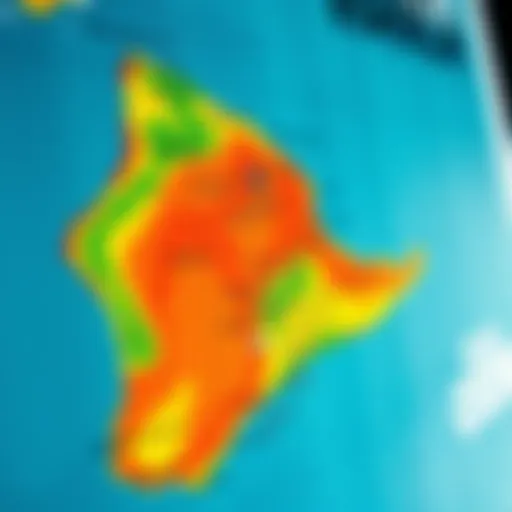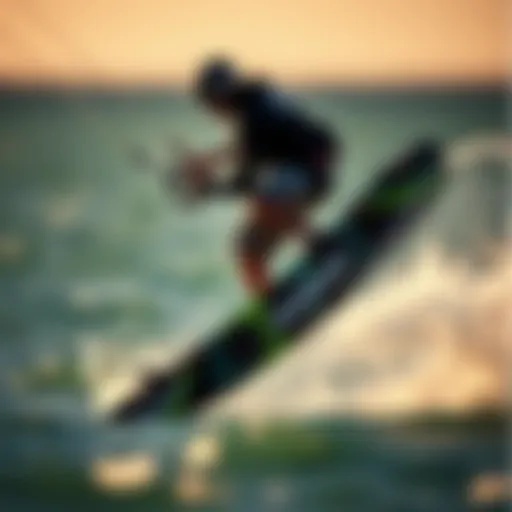Mastering Weather Radar for Kiteboarding on Jekyll Island

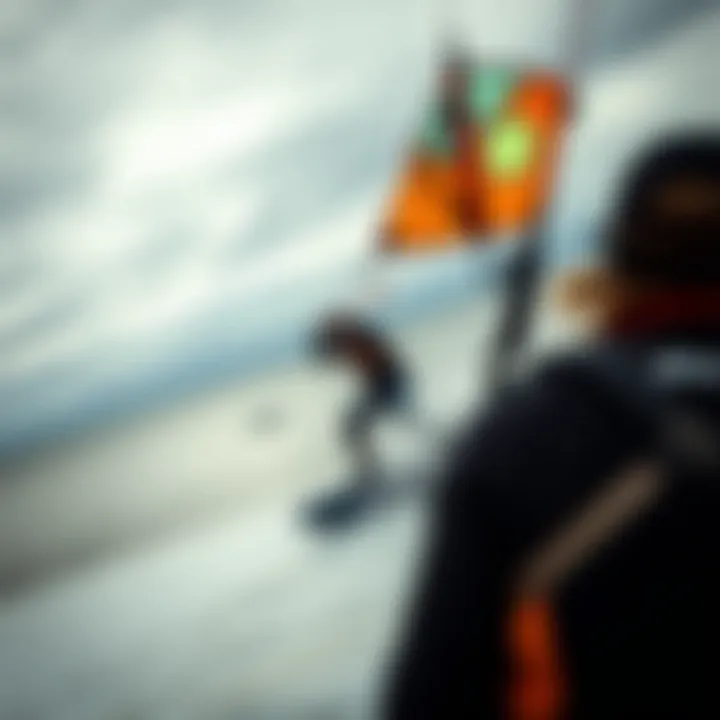
Intro
Kiteboarding on Jekyll Island is nothing short of thrilling, with its challenging conditions and stunning scenery. But before you strap on that harness and hit the waves, understanding the weather radar becomes crucial. Weather patterns dictate not just the quality of your ride, but also your safety on the water. Diving into the world of weather radar can seem daunting, yet it offers invaluable insights for kiteboarding enthusiasts. From scanning for wind speeds to deciphering storm conditions, having this knowledge is the key to optimizing performance and ensuring a safe experience.
This guide aims to unravel the significance of weather radar in kiteboarding, particularly on Jekyll Island. It discusses the technology behind weather radar, how it influences kiteboarding conditions, and practical tips on how to interpret the data. Whether you're an experienced kiteboarder or just starting out, grasping these insights will enhance your kiteboarding adventures. Let's jump right into it!
Foreword to Weather Radar
Weather radar is a pivotal tool for anyone keen on understanding climatic conditions, particularly for those who find adventure in kiteboarding. Kiteboarders, instructors, and enthusiasts alike rely on accurate weather information to make informed decisions about when and where to practice their sport. In the dynamic world of kiteboarding, weather can be a fickle friend or a formidable foe, making it essential to be well-versed in how weather radar operates and how it translates into safe and exhilarating sessions on the water.
What is Weather Radar?
Weather radar is a sophisticated technology designed to detect precipitation, storms, and wind patterns in real-time. Unlike basic weather forecasts, which can often be generalized and sometimes imprecise, radar provides immediate data. A radar system sends out radio waves, which bounce off objects like raindrops or snowflakes, then return to the radar dish, allowing meteorologists to assess the intensity, movement, and type of weather approaching.
For kiteboarders on Jekyll Island, this means having access to real-time data about conditions. Whether you’re planning a leisure ride or gearing up for a competitive event, knowing the weather at a granular level—down to specific gusts and swells—can make all the difference in your performance and safety.
How Weather Radar Works
Understanding how weather radar works requires a brief dive into the technical aspects without getting bogged down in complexity. Essentially, weather radar systems utilize the Doppler effect, which measures the change in frequency of waves in relation to an observer moving relative to the source. This concept allows for real-time assessment of wind speed and direction.
The radar sends out pulses of energy—those radio waves mentioned earlier—athat strike precipitation and return with information on its existence and movement. The data is then processed, creating images that illustrate the weather conditions. The radar displays various colors on these images, often representing different intensities of precipitation.
Some key elements include:
- Reflectivity: This indicates how much precipitation is present and can help identify areas of heavy rain or light drizzle.
- Velocity: This shows wind speed and direction, crucial for kiteboarders trying to navigate gusty conditions.
- Echoes: Different shapes and colors in radar imagery represent the types of weather phenomena, be it rain, snow, or a storm.
For kiteboarders, interpreting these images accurately is critical. By timing their sessions according to the radar indications, they not only enhance their performance but also prioritize safety.
"For those who don’t regularly engage with weather reports, grasping the nuances of radar can initially feel overwhelming, but it's worth the effort! "
For additional insights into the technical workings of weather radar, check out resources from Wikipedia and National Oceanic and Atmospheric Administration (NOAA).
Understanding the mechanisms behind weather radar ultimately empowers kiteboarders, allowing them to embrace the winds and waves of Jekyll Island with a confidence built on knowledge.
Importance of Weather Radar for Kiteboarding
When it comes to kiteboarding, understanding the environment is vital. Weather radar serves as an invaluable tool for kiteboarders who aim to harness the winds while ensuring their safety and performance on the water. Let’s break down why this technology is fundamental for anyone in the kiteboarding scene.
Understanding Wind Patterns
Wind is the lifeblood of kiteboarding, and knowing its patterns can make or break a session. Weather radar technology provides real-time visualizations of wind direction and speed, giving kiteboarders the ability to strategize their riding based on how air moves across Jekyll Island. This can mean the difference between riding high on waves and being stuck in gusty, unpredictable conditions.
- Real-Time Insights: With radar data, you can see how wind shifts occur, allowing for immediate adaptation to your riding style. If the wind is strong and consistent, your maneuvers can be more robust; if it’s variable, altering your approach is crucial.
- Local Variances: Jekyll Island's terrain can create unique microclimates. Weather radar reveals anomalies in wind patterns, enabling you to spot which areas are more favorable for flying your kite. You might find that one beach section has steady winds while another is windless due to obstacles.
Incorporating radar data into your pre-session checks will provide the clarity needed to make informed choices. Plus, understanding these wind patterns adds another layer of excitement, as you learn to ride in sync with nature.
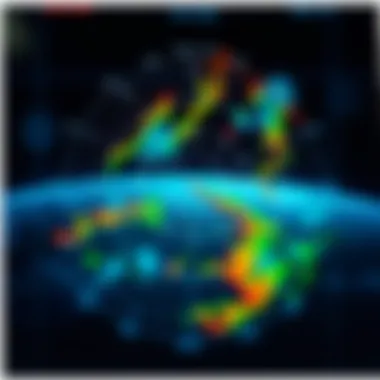
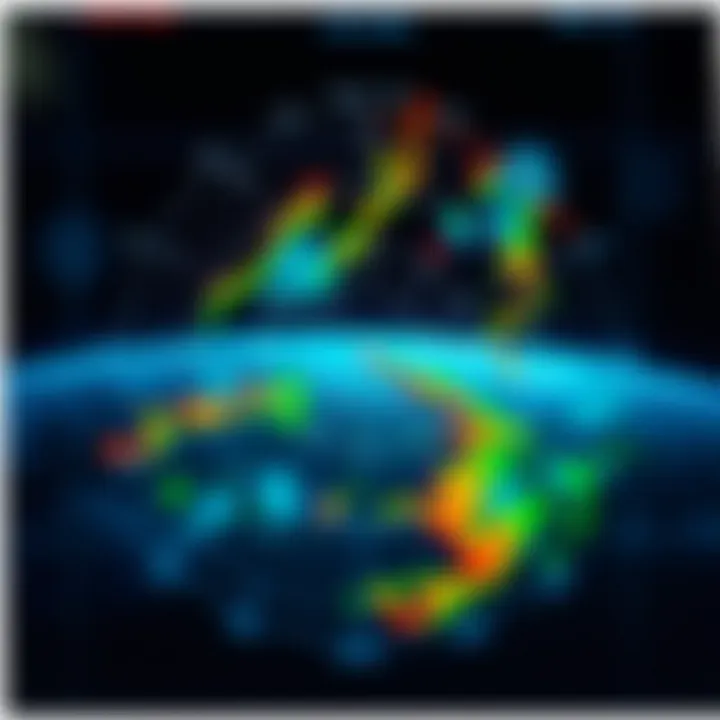
Predicting Storms and Unfavorable Conditions
Kiteboarding can be exhilarating, but safety must always come first. Weather radar plays a critical role in predicting storms and adverse weather conditions. Knowing when to hit the water or when to pack it up early is essential for a enjoyable experience.
- Identifying Storm Cells: With radar technology, kiteboarders can identify storm cells far before they reach the beach. This foresight is crucial, as it gives you time to seek shelter before the winds turn violent and chaotic.
- Monitoring Weather Fronts: Weather radar not only helps in spotting near-storm activity but also in tracking larger weather systems moving through the region. By understanding weather fronts, kiteboarders can anticipate changes in wind behavior that may last longer than just a passing shower.
"Knowledge isn’t just power; in kiteboarding, it’s the difference between a thrilling ride and a dangerous situation."
Incorporating weather radar into your routine means you will make better, safer decisions. Being proactive rather than reactive to weather conditions will enhance both your performance and your safety.
Specifics of Jekyll Island Weather Radar
In the realm of kiteboarding, understanding the nuances of local weather radar on Jekyll Island is not just beneficial; it can be the difference between a fantastic day on the water and a risky adventure. The interplay between local radar data and the island's unique climate creates a picture that every kiteboarding enthusiast should strive to comprehend. Familiarizing yourself with how radar operates specifically in this locale equips you with crucial insights for making informed decisions regarding kiteboarding conditions.
Local Radar Stations Overview
Jekyll Island is fortunate enough to be encompassed by several radar stations that hone in on its specific weather phenomena. These stations, such as the National Weather Service Radar located nearby, operate continuously, scanning the atmosphere and providing real-time data crucial for adventurers looking to hit the waves. This local radar excels at identifying wind speed and direction, both pivotal for kiteboarders.
One key player is the Suwannee River NWR Radar, which, while not directly on the island, nonetheless plays a vital role in monitoring surrounding conditions, thus influencing what kiteboarders can expect when they arrive at the shoreline.
Benefits of local radar stations:
- Real-time updates: Local radar can provide immediate information on weather changes, alerting kiteboarders to any potential dangers.
- Localized insights: Unlike broader meteorological reports, local radar zooms in on Jekyll Island's unique weather characteristics, which can greatly differ from those of nearby areas.
- Wind pattern tracking: Specific radar technologies can identify shifts in wind patterns that may affect kiteboarding activities, allowing for better planning and safety.
Unique Weather Patterns in the Region
Jekyll Island’s weather patterns are a captivating study due to its geographical location along the coast of Georgia. The island experiences a blend of coastal and inland weather influences, making it a magnet for diverse atmospheric conditions. For kiteboarders, this interplay is both a challenge and an opportunity.
One notable aspect is the phenomenon known as the brackish breeze, which occurs when warm air from the land collides with cooler sea air. This can create formidable wind shifts that might catch even the most experienced kiteboarder off guard. Moreover, the influence of the Gulf Stream introduces variability, particularly on warm, summer days when sudden thunderstorms can roll in without much warning.
"Understanding these unique weather patterns isn't just helpful; it can be life-saving. Kiteboarding should be enjoyed, not feared. Always check the radar before venturing out."
Key points to keep in mind:
- Seasonal variations: Wind patterns can shift dramatically between summer and winter, affecting the viability of kiteboarding.
- Local geographical influences: Structures such as marshes and dunes create microclimates, often resulting in unpredictable gusts.
- Thunderstorm activity: Summer afternoons often see pop-up storms that can change the safety landscape dramatically.
For kiteboarders aiming to harness the wind's power while ensuring their safety on the water, diving into the specifics of Jekyll Island's weather radar is an indispensable part of a successful outing.
Interpreting Radar Data for Kiteboarding
Interpreting radar data is crucial for kiteboarders, as it turns raw weather information into actionable insights that can make or break a session on the water. A clear understanding of radar images and their implications allows kiteboarders to anticipate changes in conditions, ensuring safer and more enjoyable experiences. Utilizing this data effectively can mean the difference between a fantastic day on Jekyll Island and finding oneself caught off guard by sudden weather shifts.
Reading Radar Images
Reading radar images may seem daunting at first, but with a little practice, it becomes second nature. Radar images showcase precipitation levels, wind speed, and direction, all of which are key for kiteboarders.
- Precipitation: Look for areas with different shades on the radar. Darker shades often indicate heavier rain, which might also mean wind shifts – not ideal for kiteboarding.
- Wind Patterns: The movement of storm cells can often give clues about wind direction. If storm clouds shift in a particular direction, that's generally where you can expect the wind to pick up.
- Showers and Clouds: Differentiating between light sprinkles and heavy downpours can impact plans. A light drizzle might not pose much risk, while a heavy downpour could bring dangerous gusts.
- Animation: If available, use animated radar images. These allow you to see how the weather is moving, giving a clearer understanding of expected conditions over time.
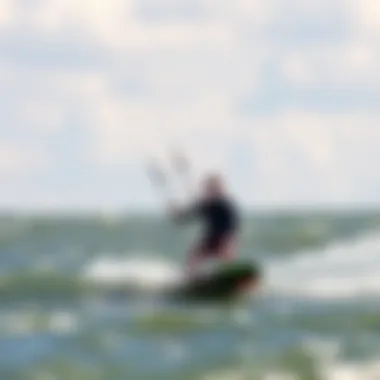
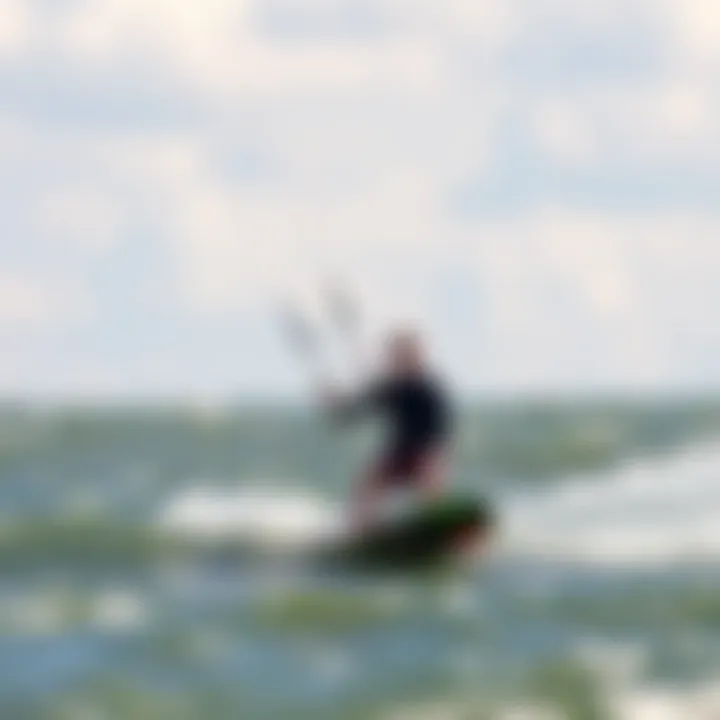
By constantly referring back to these images before heading out, kiteboarders can familiarize themselves with the typical weather signatures of the area, ultimately empowering them to make informed decisions.
Understanding Color Codes and Indicators
When it comes to interpreting radar data, color codes play a vital role. Each color often represents a different intensity of precipitation and can also indicate other weather-related phenomena. Here's how it generally breaks down:
- Green: Light rain. While not ideal, it usually means decent winds are still in play.
- Yellow and Orange: Moderate rain and increasing wind speeds, caution advised. If you’re seeing these colors swelling in your direction, it’s best to assess your options carefully.
- Red: Heavy rain or severe weather. This should send up red flags that it's time to pack up and head to safety.
- Blue: Could indicate snow or freezing rain, which is beyond kiteboarding conditions.
Moreover, many radar systems include indicators for wind direction and speed, often represented as arrows or lines on the images. Understanding these indicators helps kiteboarders gauge how favorable conditions will be. If the wind is shifting towards a less favorable direction, it’s wise to reconsider the session altogether.
"A good kiteboarder is only as good as his understanding of the weather. Stay informed, stay safe."
By aligning the color codes with your kiteboarding knowledge, you can quickly assess whether the conditions suit your skill level. This skill is essential not just for enjoyment but also for ensuring your own safety and that of others sharing the water.
Incorporating these elements into your pre-session and ongoing checks fosters a deeper relationship with the atmosphere around you. That in turn, enhances your kiteboarding experience on Jekyll Island.
Practical Application of Weather Radar for Kiteboarders
Understanding how to utilize weather radar can significantly enhance kiteboarding experiences on Jekyll Island. It’s not just about catching a breeze; it’s about catching the right kind of breeze at the right time. The practical application of weather radar allows kiteboarders to make informed decisions before they even hit the water, improving not only their performance but also their safety.
Pre-Session Weather Checks
Before you grab your gear and head out to the beach, doing proper weather checks can save you a lot of hassle — and potential danger. Weather radar provides real-time data, which is crucial for kiteboarders seeking consistent winds. Here are a few tips on how to do pre-session checks:
- Examine Wind Speeds: Different kite setups thrive in varying wind speeds. Use radar tools to check current and forecasted winds on Jekyll Island. Look for a minimum wind speed of about 12 mph for a decent session.
- Look for Wind Directions: Knowing the wind direction helps in selecting the best spot for launching. A south-east wind is generally favorable for kiteboarding on Jekyll Island.
- Check for Storm Predictions: No kiteboarder wants to be caught in an unexpected squall. Utilize radar data to look for any storm indicators or rapidly changing weather patterns.
By making these crucial checks before your session, you lay the foundation for a successful day on the water.
Ongoing Monitoring During Sessions
Once you're out there amongst the waves, staying attuned to the evolving weather is essential. Weather conditions can oscillate like a pendulum, and being proactive can help you avoid perilous situations. Here are a few pointers on how to continue monitoring the radar while kiteboarding:
- Use Mobile Apps: There are numerous applications and websites that provide live weather radar updates. These tools are a kiteboarder’s best friend, serving as instant sources of vital information.
- Recognize Cloud Patterns on Radar: When radar shows changes — such as the development of cloud bands or shifts in color coding — it’s time to reevaluate. Uncertain cloud formations could signify wind shifts or precipitation, and that means you might want to head to safer ground.
- Stay in Communication with Fellow Kiteboarders: Establish a method for sharing real-time updates about wind conditions and any imminent weather changes with your peers. An app can serve this purpose too, but sometimes a good ol' shout across the water can do the trick.
Monitoring the weather while riding can be the difference between a pleasant day gliding across the waves and a frantic race back to the shore. By keeping a close eye on the radar, kiteboarders can fully enjoy their sessions without being steered off course by unforeseen conditions.
Remember, knowledge is the wind that fills your sails!
Embracing the practical applications of weather radar equips kiteboarders with the tools they need to navigate conditions better, ensuring a thrilling and safe experience on Jekyll Island.
Safety Considerations Using Weather Radar
When it comes to kiteboarding on Jekyll Island, safety can’t be an afterthought. Understanding weather radar and its implications can make the difference between a thrilling day on the water and a potentially dangerous situation. Kiteboarders must navigate not only the exhilaration of riding the waves but also the shifting weather that can impose serious risks. By honing in on the specific safety considerations regarding weather radar, kiteboarders can better prepare and respond to changing conditions, ensuring both an enjoyable and safe experience.
Identifying Dangerous Conditions
Weather radar serves as a vital tool in pinpointing dangerous conditions that may arise abruptly. Kiteboarders should pay attention to several indicators on radar displays. Here are some key elements to keep in mind when monitoring weather data:
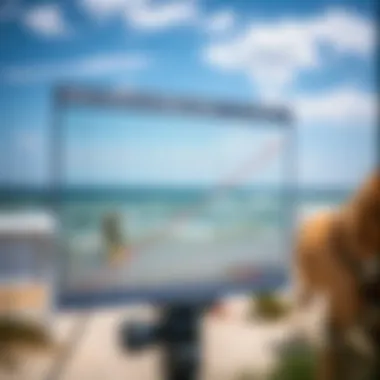
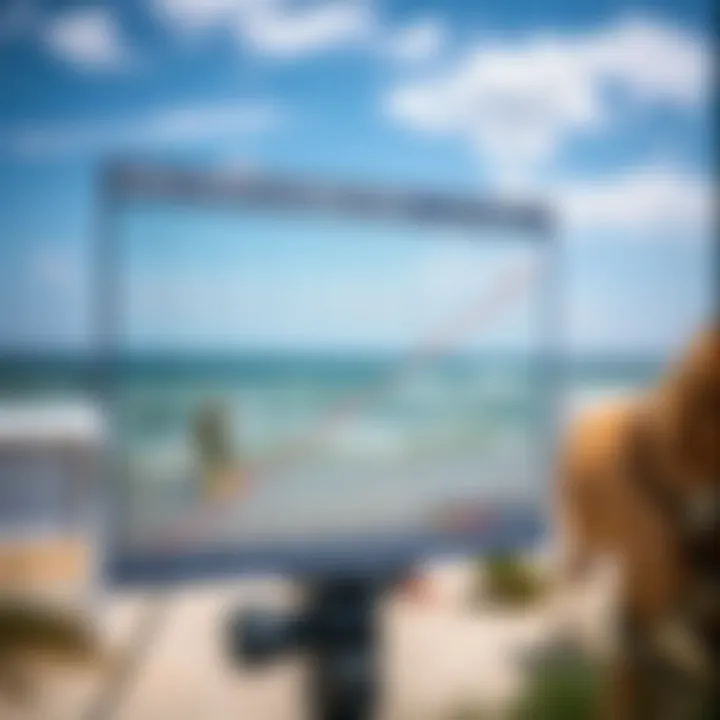
- Precipitation Intensity: Heavy rainfall can lead to reduced visibility and slippery surfaces, impacting both safety and performance. Strong indications of rainfall on the radar can signal the need to stay safe on land.
- Storm Alerts: Radar allows kiteboarders to see incoming thunderstorms or severe weather at a glance. Any sign of severe weather, particularly squall lines or storm fronts, demands immediate attention.
- Wind Patterns: High wind gusts can seriously affect kiteboarding control. By analyzing wind patterns shown on radar, you can determine when conditions are becoming too unruly for safe kiteboarding.
Recognizing these danger signs is paramount, especially since conditions can shift quickly on the water. Ignoring these elements might just put kiteboarders in harm's way.
"An ounce of prevention is worth a pound of cure." It’s always better to err on the side of caution.
Responding to Rapid Weather Changes
The weather has a knack for throwing curveballs, particularly in coastal regions like Jekyll Island. When radar indicates sudden changes, how you respond can be a matter of safety. Here’s what kiteboarders should consider:
- Immediate Evaluation: Always assess what the radar is showing when sudden changes happen. For instance, if new cloud formations appear or if there’s a shift in wind direction, check the radar for updates instead of making assumptions.
- Communication with Others: If you’re out with friends or in a group, make sure everyone is aware of the radar updates. Clear communication can prevent misunderstanding and panic, keeping everyone on the same page.
- Evacuation Plans: Have a contingency plan in place before heading out. Knowing a safe location to retreat to, in case things turn sour, can save precious time in an emergency situation.
In a sport where timing and awareness can make or break the experience, learning to interpret and react to the information provided by weather radar is vital. Staying tuned into these rapid changes can enhance safety, allowing kiteboarders to focus more on the thrill of the ride rather than the worry of the weather.
Tools and Resources for Kiteboarders
Navigating the winds and waves of Jekyll Island requires not just skill but also the right tools and resources at your disposal. Understanding how to leverage these elements can mean the difference between a thrilling session and a day cut short by unexpected weather changes. Kiteboarders, whether novice or seasoned, benefit from a rich tapestry of online resources and local communities that support their learning and enhance their experiences.
Online Weather Services and Apps
In a world where technology governs much of our outdoor adventures, kiteboarders must harness the power of online weather services and apps. These platforms provide real-time data crucial for making informed decisions on the water. Kiteboarders can tap into various services like Windy, Windy.app, or the National Weather Service's website for localized forecasts tailored specifically for the Jekyll Island area.
Why is this important? Well, the specificity in weather reports can profoundly affect on-water decisions. For instance, suppose a kiteboarder checks a generic weather app that reports merely sunny skies. In that case, they may not be aware of gusty winds or sudden incoming storms impending in the localized area. Conversely, utilizing a dedicated kiteboarding app can yield accurate wind speeds, direction, and even tips on best times to ride.
Here's a brief look at some recommended apps and their features:
- Windy: Offers detailed wind maps and a global view of weather conditions.
- Kite Weather: Focused on kiteboarding, this app provides evaluations on wind conditions and real-time updates.
- MeteoEarth: Engaging graphics allow users to visualize weather patterns in real-time.
Understanding these tools not only boosts performance but inherently promotes safety by keeping riders aware of shifting conditions they might encounter while on the water. The integration of these resources into a kiteboarder’s routine is paramount.
Local Kiteboarding Communities and Forums
Beyond online services, becoming part of local kiteboarding communities can enrich the kiteboarding experience on Jekyll Island. Engaging with fellow adventurers on forums like Reddit or Facebook groups dedicated to kiteboarding opens doors to invaluable shared wisdom and firsthand experiences. These communities often provide insights into the local climate, spot recommendations, and even safety tips crucial for navigating Jekyll Island’s unique conditions.
"Community is not just about where you come from; it’s about sharing the ride with others on the journey."
Here are some benefits to joining local forums and communities:
- Firsthand Experiences: Members regularly share their experiences, great spots, and challenges, which can lead to a better understanding of local quirks and weather patterns.
- Event Information: Communities often facilitate meet-ups or events, encouraging networking, learning, and inspiration from experienced kiteboarders.
- Support and Encouragement: Whether you’re facing new skills or weather concerns, being in touch with others fosters motivation.
End
The importance of understanding weather radar data cannot be overstated for kiteboarders navigating the waters of Jekyll Island. Kiteboarding relies heavily on wind and weather conditions, making knowledge of how these elements interact vital for both performance and safety. With specific insights from local weather radar, kiteboarders can effectively anticipate changes, which allows for better planning and decision-making.
Summary of Key Points
- Weather Radar Basics: Understanding the fundamentals of weather radar helps kiteboarders interpret the conditions accurately. The ability to read radar images and comprehend color codes is essential for predicting wind patterns and potential storms.
- Local Variations: Jekyll Island has unique weather dynamics. Learning how local radar operates offers insights that can distinguish between favorable and unfavorable conditions specific to this region.
- Safety Measures: Awareness of dangerous weather conditions is critical. Utilizing radar data allows kiteboarders to identify risks promptly, thereby enhancing safety on the water.
- Practical Application: Regularly checking radar data before and during sessions can greatly improve the kiteboarding experience. It equips enthusiasts with the necessary information to make informed choices and enjoy their time on the island.
Encouragement for Continuous Learning
Staying informed about evolving weather patterns and radar technology is essential for every kiteboarding enthusiast. As technology advances, so do the tools available for monitoring conditions. Engaging with local kiteboarding communities and forums can provide additional insights, allowing for shared experiences and collective learning. Online resources such as NOAA and Weather Underground can offer updated weather radar data specifically tailored for kiteboarding needs. Furthermore, kiteboarders should consider joining online platforms like Reddit to discuss weather trends and share tips with fellow enthusiasts.
By embracing a mindset of continuous learning, kiteboarders on Jekyll Island can not only enhance their performance but also foster a deeper appreciation for the ever-changing weather that influences their favorite sport.



